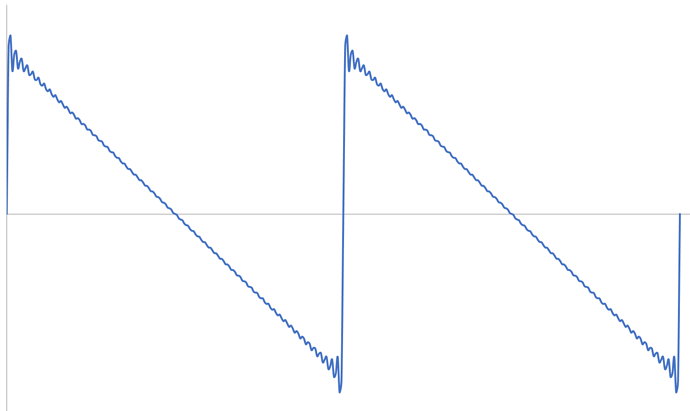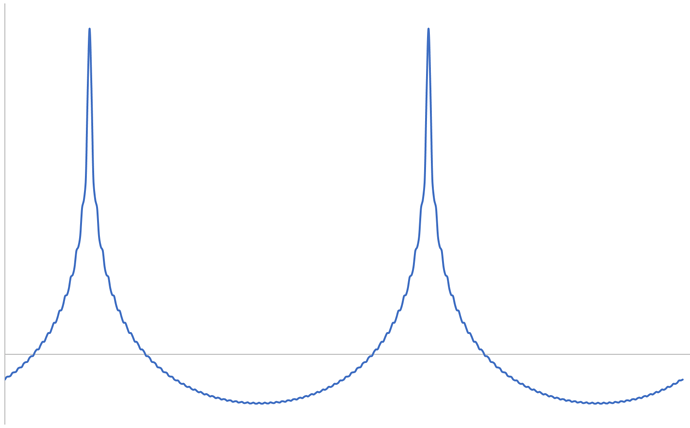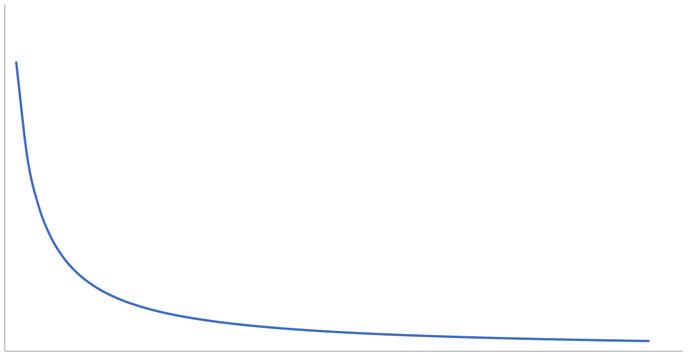Thanks. I look into them.
I am always interested in that kind of sources.
Yes, that’s exactly what I’m saying. Otherwise your Direct Stream DAC would not cost $5,000 or so. I mean, really, why did you pay so much for it if a $300 DAC sounds better to you? There’s a reason (normally, at least) why audio gear that sounds better costs more – it’s expensive to make good sounding gear.
I payed so much for my Direct Stream DAC three years ago because there where no MQA and no Explorer2 then. Playing ordinary CDs, my Direct Stream DAC sounds much better than the Explorer2. The Direct Stream DAC has served me extremly vell during this time and I don’t regret that i bought it.
But now there is this new format MQA that Direct Stream DAC doesn’t handle that make the MQA files from the 300$ DAC sound better to my ears.
If the Direct Stream DAC could unfold MQA files like the Explorer2 I would have agreed with you that the Direct Stream DAC would have sounded much better then the Explorer2.
Interesting point. I think a lot of us are in the same spot as you are. Have you tried playing back MQA through the TIDAL desktop app, where the MQA is somewhat unfolded and typically comes out as 24/96? I wonder how that sounds through your Direct Stream DAC compared to fully decoded MQA on the Explorer2?
I suppose when it comes to DAC’s we’re talking about technology as much as quality audio components and design so I admit its possible for new technology to come along that is cheaper than the old that also sounds better too.
I wonder how much of this is actually in the file format (which can be handled by software) vs the need for a specialized DAC which is why I ask the point above.
I slightly prefer fully unfolded MQA through an NAD M32 using their BluOS app (Roon doesn’t send bit perfect end-to-end to BluOS, so MQA doesn’t work - there is a some kind of RAAT problem that neither company will discuss) - as compared to using the desktop Tidal app through a PS Audio DS Jr. Not sure how much better the DS senior is, I suspect it depends on how its output interacts down the chain. I returned the DS Jr, but plan on picking up a senior, used at some point. It is a superb DAC for DSD. (IMHO, of course.)
If you look at Archimago’s blog, (at http://archimago.blogspot.com.au/2017/02/comparison-hardware-decoded-mqa-using.html) he compared the output from several different perspectives and concluded that the semi-MQA/unfolded 24/96 through the Tidal Desktop App, is very similar to the output from a fully decoded MQA signal – his ears also couldn’t discern the two. Personally, I’d be happy if Roon just supported MQA the way the Tidal app does and gives me 24/96 to my DCS DAC (which doesn’t do MQA). I’m sick of using the Tidal app for playback, then switching back to Roon for everything else.
I certainly wouldn’t regard his measurements as being even close to definitive
And as to the conclusion reached thru his ears, he is certainly entitled to his opinion…as are the many who have reported differences between fully decoded and partially decoded material
That’s the thing about audio, in the end it’s truly up to each person to evaluate and determine how they like the sound. Not everyone will agree.
Why do you say his measurements aren’t even close to definitive? Do you know something he doesn’t? Have you read the whole post and evaluated all the technical data he presents?
Yes, I’ve read his whole post in detail…and just about all of his posts over the past several years…including his previous posts on MQA…and as a result arrived at my own conclusions
I’ve also read his recent review of Roon…and his reasons for cancelling his trial…and in particular that Roon is unable to handle & display different Versions of the same album?
Everyone’s entitled to their opinion.
As for Roon handling different versions, that’s been available for a long time, you just had to set it to not hide duplicates and then make it look at your metadata. That said, it’s become much better as of v3.x. I haven’t read the particulars on his beef with Roon, but again everyone’s got their take on things. Personally, I’m very happy with Roon and the new additions. I’m also glad they’re making their technology available to other vendors such RoonOS and RAAT (and “Roon Ready” devices). It’s a well-polished ecosystem, the support is excellent – not sure what else good is left to say.
You’ve made my point for me…yes, I’m well aware that Roon has handled Versions almost since the outset…it’s that Archimago’s article would have you believe differently
Perhaps a small point to some…but it’s indicative of many other issues I’ve read on his blog posts about various issues…simple issues, but IMHO you shouldn’t get them wrong…and worse still, uncorrected months and years later after the errors have been pointed out…leading to readers to misleading conclusions about Roon’s capabilities…as well as many of the other things he writes about
I have read some of his discussion. He is certainly quite expert. But I am concerned about his complete focus on frequency domain analysis. It’s a general observation that the “frequency spectrum” as we normally talk about it is about amplitude and leaves out phase, which is equivalent to timing. I.e. the typical spectrum leaves out half of the data. This is wrong in general, but especially considering that the claims about MQA are about correcting time alignment. So it seems that his measurement entirely misses the point about MQA.
Some doubt the audibility of phase/time. I am quite convinced about its importance, ever since I first heard time aligned speakers. (In the 80s I walked into a dealership and told him I wanted to buy Acoustat electrostatics, he said if you absolutely insist I’ll sell them to you but first you should buy these Thiels. They were time aligned, cheaper, and completely blew away the Acoustats. I bought the Thiels.) Just to illustrate the point: these two waveforms have exactly the same frequency spectrum, differ only in phase; I imagine the difference may be audible.
Here is the “spectrum”:
A simple illustration, I know – most of us know this. Just wanted to emphasize a concern.
I am a bit more impressed with Archimago’s difference calculation. If you take a difference in the time domain, that’s a powerful analysis. But then showing only the frequency spectrum – I don’t know.
I’m not an expert and haven’t done this kind of measurement. But I’m a little bit concerned.
I’ve a impulse response graph… we supposedly to see a clean high energy impulse response. Both analogue and DSD are capable of doing that but not so much on PCM. It will be interesting to see on this flare on this format.

Most of modern recordings don’t contain much information above 60kHz, so even with first fold back done by Tidal desktop is sufficiently or close to reproduce above 20kHz, If there’s too much information above 20kHz it will likely go into channel overload and once this happens it will switch to ‘lossy mode’.
Two things to keep in mind, both of them regarding bandwidth…
An analog playback chain has to be high bandwidth to produce the depicted analog impulse response. Impulse response and frequency response are time domain and frequency domain cognates of one another. If the analog playback chain (including loudspeaker) frequency response rolls off >20 kHz, the impulse response will be affected.
The digital impulse responses depicted exhibit ringing from linear phase digital filtering. That ringing is at the Nyquist frequency, if memory serves me correctly. For all sampling rates ≧44.1 kHz, that ringing is ultrasonic. As with the analog example, playback chain bandwidth has to be great enough to reproduce the ringing. If playback chain (including loudspeaker) frequency response rolls off >20 kHz, the ringing will be attenuated.
AJ
If your Blue MQA light doesn’t light, your file is not bit perfect and not Authenticated as MQA. This will not be the fault of Roon or RAAT.
Something is wrong with your set up. Explorer 2 lights Blue for me.
A single pulse at 44k is 0.02 ms wide.
I imagine if you carve a full amplitude, 0.02 ms vertical pulse into a vinyl sidewall, the real response will include the cartridge flying off…
First may I say that I’m really glad that we’re beginning to talk about time domain response. This has been sorely missing from discussion and, I might re-iterate, from 3rd party measurements (though I admit, these might not be possible or practicable).
High bandwidth analogue electronics are a critical part of the speaker impulse response capability, but I wanted to highlight something: Just because a loudspeaker (tweeter) is incapable of reproducing, say, 25kHz, this does not mean that the playback system is therefore limited to a time resolution of 25kHz. Frequency response cannot be used as a proxy for impulse response. Conversely, the presence of a tweeter which goes up to 50kHz guarantees nothing about the time resolution of the speaker (though it may be indicative).
Unfortunately, hardly any loudspeaker (and other Hi-Fi equipment) manufacturers publish the system impulse response specs. of their kit. Hopefully this will change.
The analogue (pun intended) I would use is this: a loudspeaker can reproduce a 1kHz sine wave, but can it produce that sine wave at a moment in time which is accurate to 5 microseconds (= 200kHz)?
And It’s as important to recognize that reproducing low frequencies with high time accuracy is as important as reproducing the time accuracy of the high frequencies.
An analogy that may help.
We recorded the Frankie Davies Band at Little Rabbit Barn on Saturday and watching some of the camera footage via my GO Pro over the drums we noticed that; we could see the Bass player playing but the Audio could not be heard as it was too low frequency but we could hear the impact it made on the Cymbals and see Laura damping them where she could.
The point being, just because you can’t hear it doesn’t mean it’s not having an effect.
Not a perfect analogy I know.
Chris
So, I have been reading a bit about MQA, but still unclear about one thing.
As I understand it, sotware players can only unfold but not fully decode a MQA file, playing it at 96 khz rather than 192.
But surely the decoding in a dac - e.g. the meridian - is done by software? Why cant the player fully decode it and send a 192 khz file to the dac?
Is there something that really can only be done by hardware?
Or is this only licensing/commercial interests, prohibiting the software companies from fully decoding it? That seems kinda disconcerting, especially for small dac producers.


